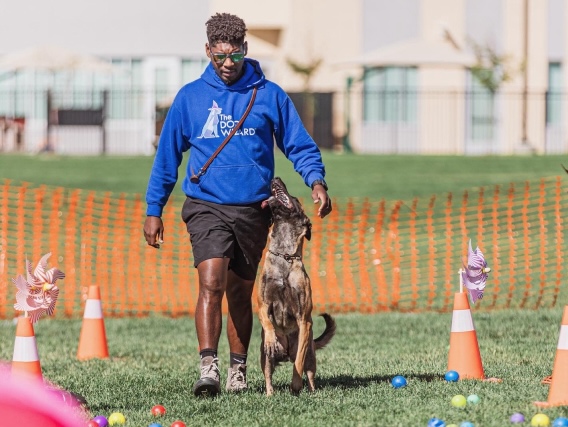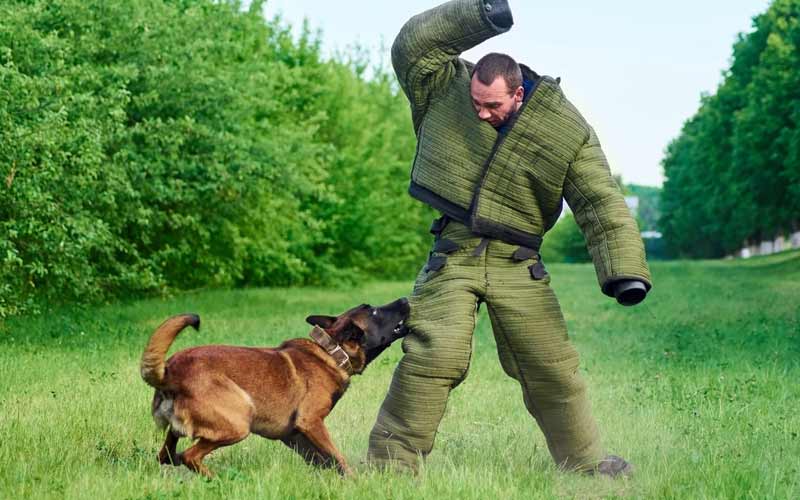Positive Reinforcement in Dog Training: A Humane Approach to Success
Positive Reinforcement in Dog Training: A Humane Approach to Success
Blog Article
Transform Your Dog's Behavior With Proven Training Methods
Transforming your pet's habits needs a nuanced understanding of their individual traits and needs, along with the application of tried and tested training approaches. By employing positive reinforcement and recognizing vital signs in their body movement, you can efficiently resolve usual behavioral issues such as excessive jumping or barking. Uniformity in your training strategy not just boosts obedience yet also cultivates a deeper bond of count on and regard between you and your pet. Nevertheless, the path to successful change may present unpredicted difficulties that warrant further expedition.
Understanding Pet Behavior
Understanding pet dog actions is essential for effective training and interaction in between people and their canine companions. Pets, as social pets, display a variety of actions affected by genes, atmosphere, and experiences - Dog training. Identifying these habits assists proprietors tailor their training approaches to satisfy the details demands of their pet dogs
Key facets of pet dog actions include body movement, vocalizations, and social communications. For example, a wagging tail usually indicates exhilaration, while a lowered head might signify submission or fear. Comprehending these signals can aid proprietors analyze their pet's emotion and respond properly. Furthermore, socializing plays a vital duty in forming habits; dogs that interact positively with other animals and various people are typically a lot more versatile and well-adjusted.
Additionally, recognizing stress signals-- such as panting, pacing, or avoidance behaviors-- can avoid acceleration right into a lot more significant concerns. Owners that are attuned to their pet's actions can create a nurturing and risk-free setting, promoting trust and boosting the training procedure. Ultimately, a deep understanding of canine habits lays the foundation for an unified relationship and reliable training outcomes, making certain both dogs and their owners thrive together.
Favorable Reinforcement Techniques
Favorable reinforcement strategies are commonly recognized as one of one of the most reliable techniques for training pet dogs, promoting a positive discovering setting. This approach includes fulfilling wanted actions with deals with, appreciation, or play, thus motivating the canine to duplicate those actions. Unlike punitive techniques, positive reinforcement develops trust fund and reinforces the bond between the pet dog and the fitness instructor.
Incentives ought to be given quickly adhering to the wanted habits to help the dog make the link. Consistency is likewise crucial; using the exact same commands and benefits helps the pet dog recognize what is expected.
It is essential to note that positive reinforcement is not about bribery; instead, it has to do with reinforcing etiquette. With time, as the dog learns to connect particular activities with positive results, the regularity of incentives can be progressively reduced, transitioning to spoken appreciation or recurring incentives. This technique not only encourages obedience however additionally advertises a delighted and positive pet, making training a much more pleasurable experience for both events included.
Resolving Typical Concerns
Addressing typical issues throughout canine training is necessary for making sure a harmonious and effective partnership in between the pet and its proprietor. Many canine proprietors encounter behavior challenges, such as extreme barking, leaping, and leash pulling. Comprehending the origin triggers of these behaviors is essential for reliable training.
Too much barking may originate from boredom, anxiety, or a lack of socialization. look at more info To mitigate this, supply enough exercise, mental excitement, and possibilities for social interaction with both humans and other canines. Jumping can usually be an indication of exhilaration or a need for interest. Educating the canine to sit upon welcoming can have a peek here redirect this behavior favorably.
Chain pulling is one more prevalent problem, often arising from a pet dog's passion to check out. Making use of correct chain managing strategies, integrated with training methods that urge loose-leash walking, can dramatically boost this actions.
Furthermore, concerns like source securing or separation anxiousness need tailored approaches. Steady desensitization and counter-conditioning can be efficient in dealing with these challenges. By identifying and proactively managing these common concerns, dog proprietors can foster an extra enjoyable training experience and reinforce the bond with their canine companions.
Uniformity in Training

To achieve consistency, it is vital that all participants of the home stick to the same training approaches. As an example, using the very same spoken hints and hand signals guarantees that the dog receives consistent messages. In addition, the timing of modifications and rewards need to be constant; prompt reinforcement boosts the likelihood that the dog will certainly connect the behavior with the outcome.
In addition, developing a routine can better enhance uniformity. Normal method sessions, combined with organized schedules for feeding, strolling, and play, help pets expect and understand their atmosphere, making them extra receptive to training. Ultimately, uniformity fosters a sense of protection and trust fund, equipping pet dogs to read more properly. By devoting to a structured strategy, trainers can advertise positive habits changes and grow a well-mannered buddy.
Building a Solid Bond
How can promoting a strong bond in between a pet and its proprietor improve the training experience? A strong relationship built on trust fund and regard serves as the foundation for reliable training. When a pet really feels protected in its link with its proprietor, it is most likely to show favorable actions and be receptive to finding out. This bond urges the pet dog to engage completely in training sessions, as it watches the proprietor as a resource of advice and assistance.
Moreover, a strong bond promotes much better interaction. Dogs are skilled at reviewing human hints, and check this site out a trusting partnership permits clearer signals throughout training. Owners who invest time in structure this bond via play, socializing, and positive support create an environment where pets feel eager and determined to learn.
In addition, a well-established link can lower anxiety and behavior problems, as pet dogs are less likely to act out when they really feel comprehended and looked after. Consequently, focusing on the growth of a solid bond not just boosts the training experience however also adds to a better and much more well-adjusted pet. Inevitably, the trip of training transforms into a collective collaboration, resulting in lasting behavior renovations.
Conclusion

Owners that are attuned to their pet dog's habits can produce a nurturing and secure environment, cultivating count on and improving the training process. Inevitably, a deep understanding of canine behavior lays the structure for a harmonious relationship and reliable training outcomes, making sure both pets and their owners flourish together.
Addressing common issues during pet training is vital for guaranteeing a harmonious and effective connection between the canine and its proprietor.Consistency is a keystone of reliable canine training, as it establishes a clear framework for the pet to comprehend behaviors and assumptions.In conclusion, changing a dog's actions through proven training approaches calls for an understanding of canine behavior, the application of favorable support techniques, and an emphasis on consistency.
Report this page